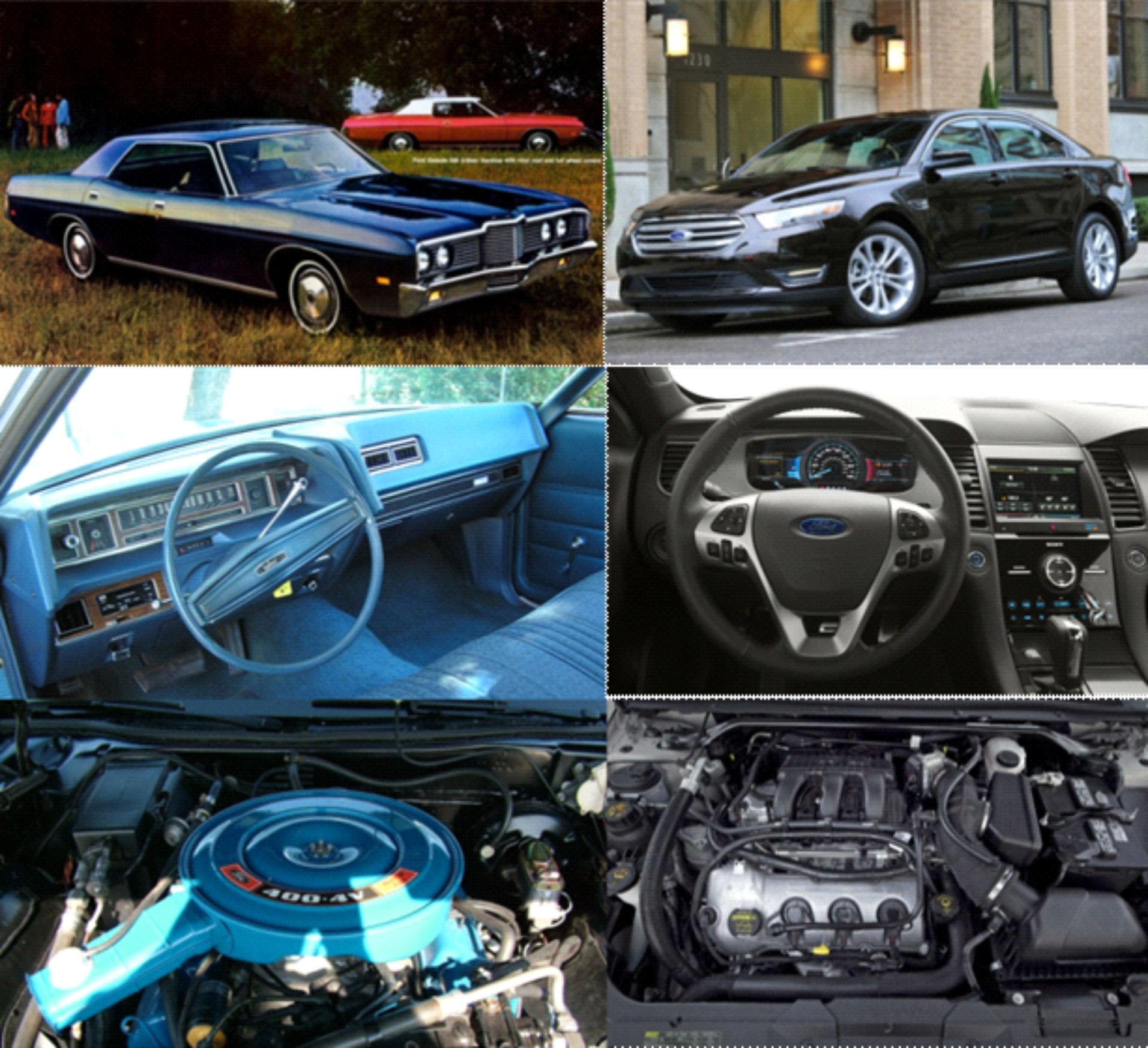
This week’s post is brought to you by AESP’s 2014 Summer Conference, which went off last week in San Francisco. I was speaking with a lifelong esteemed consultant from the Bay Area during the opening reception, and his disclosure was that regulators in a certain state[1] are wrenching down too tightly on baseline assumptions. At the same time, they are unyielding in their energy-saving targets. This is a problem because it leaves customers that haven’t been picked over with artificial barriers.

During the closing plenary, I noted a similar comment by Janice Berman from Pacific Gas and Electric. Her comment, stated a couple times, was that we need to stop pretending buildings built in 1972 have the same issues as those built in 2012. To me, this is about baseline assumptions for developing incentives, enrolling more customers, and crediting savings for programs – and I agree wholeheartedly.
Speaking of which, here is a comparison of fine autos, circa 1972 versus today. Notice that back in the day, car ads were set out in the country off-road in some grassy field out of site. Why? Because those cool dudes shown in the back left consumed contraband and engaged in activities their parents wouldn’t approve of – out there in the country. You early ‘70s grads know what I’m talkin’ about. Yes, millennials – those are your parents, and that’s what they did.
Cars are a good analogy in some ways and poor in others. Some of the building equipment back in those days was/is as primitive as the stuff under the 1972 Galaxy 500 hood. Primitive 1972 building stuff would include pneumatic control systems. Like finding a guy who could tune the carburetor on that engine, building owners would have a very tough time finding anyone to fix pneumatic controls today. It would be like handing a dial phone to a millennial and asking them to fix it. They’d send you to the Apple store for a new iPhone. For buildings, they would say, tear that junk out and go digital.
The engine itself may be indicative of building air conditioning efficiency improvements over the past forty years. That 1972 Galaxy 500 engine is a 400 cubic inch hydrocarbon belching monster. That’s 6.5 liters of piston displacement versus a relatively puny 3.5 liters for its distant predecessor, the Taurus, today. And they probably produce comparable power.
The analogy pretty well ends there. Thankfully, perhaps mercifully by design, cars from 1972 have rusted away and/or their engines have seized up and they’ve been recycled into rebar, a train car wheel or an I-beam.
Most 1972 buildings have probably not disappeared. For that matter, the discussion could be expanded to include anything built before 1990. Many components have likely been replaced. These may include chillers, lighting, and controls. Insulation may or may not have been upgraded. Boilers can last longer than the Washington Monument. Air handling systems may persist for eons. And always know this: the propensity for digital control systems to be screwed up and wasting energy has been, and still is a constant.
In order to capture more legitimate savings, programs must adapt, and as Ms. Berman says, we should stop pretending owners/managers of old buildings face the same barriers and have the same opportunities, or lack thereof, as compared to owners/managers of new buildings.
Consider one very popular and successful program that most utilities have: refrigerator recycling. The old behemoths can go toe to toe with the Washington Monument as well. New appliance programs are no longer cost effective because the incremental savings is tiny. But paying to get these old guzzlers off the grid is a good thing for programs. Why not similar programs for a huge variety of other old, outdated stuff?
One barrier is outdated thinking and another is administrative cost. To these I say, get over it. Outdated thinking goes like this: that old stuff is going to die sometime anyway, and when it does, the customer is going to have choices of what is available on the market today – and therefore, the baseline should be the code or energy standard minimum.
Like refrigerators, there are a lot of things in buildings that are going to lumber along wasting energy, indefinitely. Like refrigerators, customers should be incentivized to replace or upgrade operating equipment, and I don’t care how old it is. The baseline is in situ, status quo operation.
This takes us to the next barrier, administrative cost. It may cost more to equitably and accurately administer such programs. But so what? Do we want to save energy or not? It will take more oversight, engineering, and quality control to ensure legitimate equipment is being taken out of service. But administrators of refrigerator programs have figured it out. What’s the diff? It will require more custom calculations. These things, unlike refrigerators, will not be nearly as uniform in savings potential. They are custom projects.
Note however that even though the administrative costs may be higher, the legitimate impacts will be greater. For example, an old 5 ton air conditioning unit operating in the upper Midwest could consume 7,000 kWh per season. A new one that just meets code/standard would consume 3,230 kWh; a 3,769 kWh savings. Under the modern day programs, the “savings” would be zero in this particular case.
This is worse than our corporate tax code for repatriating offshore cash – to which I say, 35% (tax rate) of $0 is zero. I.e. companies don’t bring their money home because 35 cents on the dollar goes to the feds as a reward for offshore success. It’s hard to beat this nonsense but in a way we have: 0% of 3,769 kWh is zero.
The customer choice is not this or that, it is do or don’t.
[1] California, but I wanted readers to work for it – and this blog is not about California, specifically.






Join the discussion 2 Comments